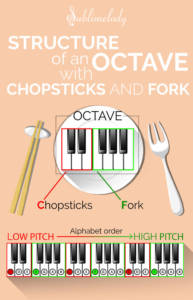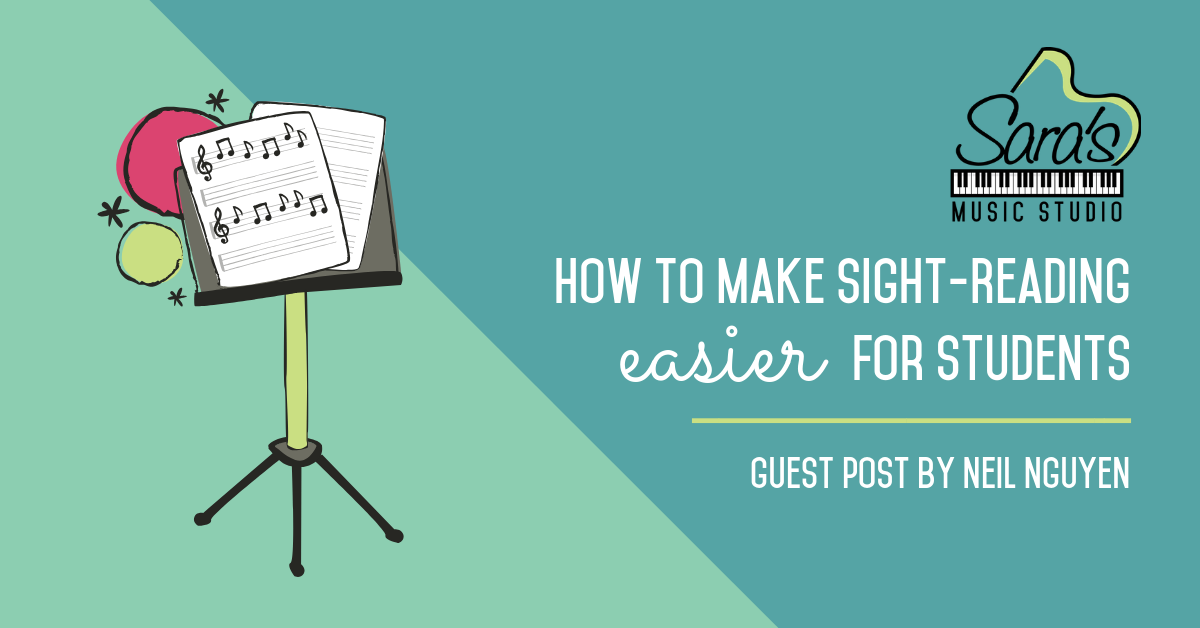How To Make Sight-Reading Easier For Students
From Sara: Today’s guest post comes to you from fellow piano teacher Neil Nguyen. He’s got some great tips to use with young sight-reading students! Hope you enjoy 🙂
How To Make Sight-Reading Easier For Students
by Neil Nguyen
I bet 99% of you will agree with me:
Teaching music theory, especially sight-reading, can be a pain.
Sight-reading involves the use of left-brained functions, such as memorizing a bunch of facts and thinking logically. These functions are also essential in learning maths and science.
No wonder so many of our students get bored and demotivated when it comes to sight-reading!
Today I’m sharing 2 strategies that will make the learning process faster and easier.
Let’s get started.
2 Strategies To Make Sight-Reading Easier
1. Using Visuals
Visuals play a huge role in our learning. You can learn more about the benefits of using pictures in teaching music theory here.
If we combine complex theories with creative ideas and illustrations, the concepts are easier to understand, you’ll save you a ton of effort, and your students learn faster.
And below is an example of how theory, idea, and illustration are combined:

The diagram above shows you the structure of an octave and how to remember the names of white keys by chopsticks and fork.
Interpretation: The two black keys on the left side are like a pair of chopsticks. The first letter of “Chopstick” is C, so the first white note in the red-border box is C.
Quite the same, the three black keys on the right side are like a fork. The first letter of “Fork” is F, so the first white note in the green-border is F.
To see the full infographic on how to read piano notes and keys (which includes the “metal flip strategy” to read music notes and corresponding keys), click here to visit the original guide.
2. Reduce Sight-Reading Learning Time Per Session But Increase Frequency
If a practice session is designed for sight-reading only, your student will be exhausted!
The solution is to reduce sight-reading learning time, but increase frequency.
It doesn’t only make the students feel more comfortable, but remember better because repetition is the secret force behind long-term memory, according to Brain Athlete .
A 45 minute practice session might look like this:
- 5 minutes for warming up fingers
- 5 minutes for sight-reading
- 10 minutes for practice old pieces
- 5 minutes for sight-reading
- 10 minutes for practice new pieces
- 5 minutes for sight-reading
- 5 minutes for reviewing
And for beginners, 10% of a practice session will be about sight-reading. It’s especially useful for kids.
As the learners improve, increase the time for sight-reading to 30% or even 40% since now they can learn complex concepts much faster.
And that’s it for my guide on the benefits of sight-reading and how to make it easier!
Hopefully, now you are armed with new effective method when teaching music theory, especially sight-reading!
 Neil Nguyen is the Founder of Sublimelody – A blog that focuses on publishing high-quality piano education guides that have simple instructions and lots of friendly illustrations.
Neil Nguyen is the Founder of Sublimelody – A blog that focuses on publishing high-quality piano education guides that have simple instructions and lots of friendly illustrations.





![Let’s Chat Branding, Baby [Vlog]](https://sarasmusicstudio.com/wp-content/uploads/2019/06/Screen-Shot-2019-06-12-at-12.39.00-PM-370x370.png)